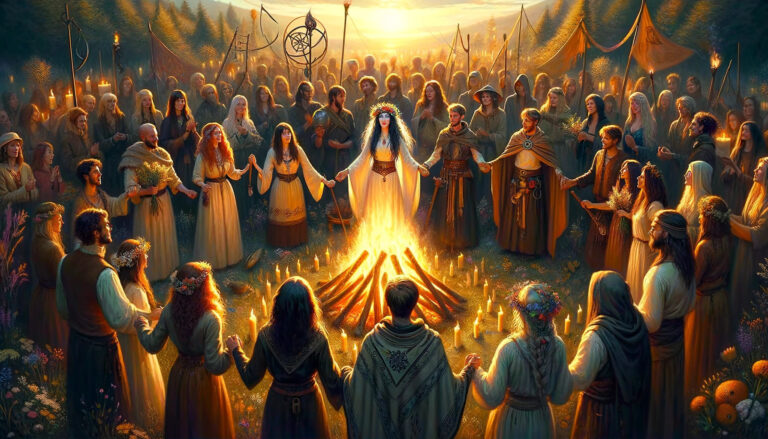Significant confusion exists between the terms Wicca and Witchcraft, with many people choosing to use them interchangeably. But for those whose lives are embedded in these traditions, they have very different meanings.
This article will explore what Wicca is, and how witchcraft exists within Wicca, while also trying to make clear that Wicca is just one Neopagan tradition, and it does not represent all Paganism or have a monopoly on witchcraft.
Wicca vs Paganism vs Witchcraft: What’s the Difference?
Wicca is a form of paganism, one of the many forms.
The term paganism was coined in the fourth century by Roman Christians to refer to all religions outside of the Judeo-Christian lineage.
So, the term could technically be used to refer to any religion outside of the Abrahamic tradition.
However, today paganism is more commonly used to refer to religions that are outside the main world religions and aren’t traditional religions that have been practiced continuously.
For example, while Buddhism is not Abrahamic, it is not called paganism because it is a major world religion.
Similarly, the religions of Native Americans and Australian Aborigines are not considered paganism.
There are many different types of paganism, of which Wicca is one.
We are going to talk about Wicca specifically shortly, but other examples of pagan religions include Asatru or Heathenry, which is the belief in the Old Norse gods, and other reconstructionist religions, such as the worship of the Greek and Egyptian gods.
While many pagan religions include elements of magic and witchcraft, not all pagans practice witchcraft or consider themselves witches.
Moreover, you don’t have to be pagan to consider yourself a witch. For example, many medieval Christian scholars practiced the magical arts and are responsible for the grimoires that survive today. Magic practitioners are present in many religions, from the Volva witches of Old Norse religion to the wise shamans in Native American traditions.
When was Wicca Created?
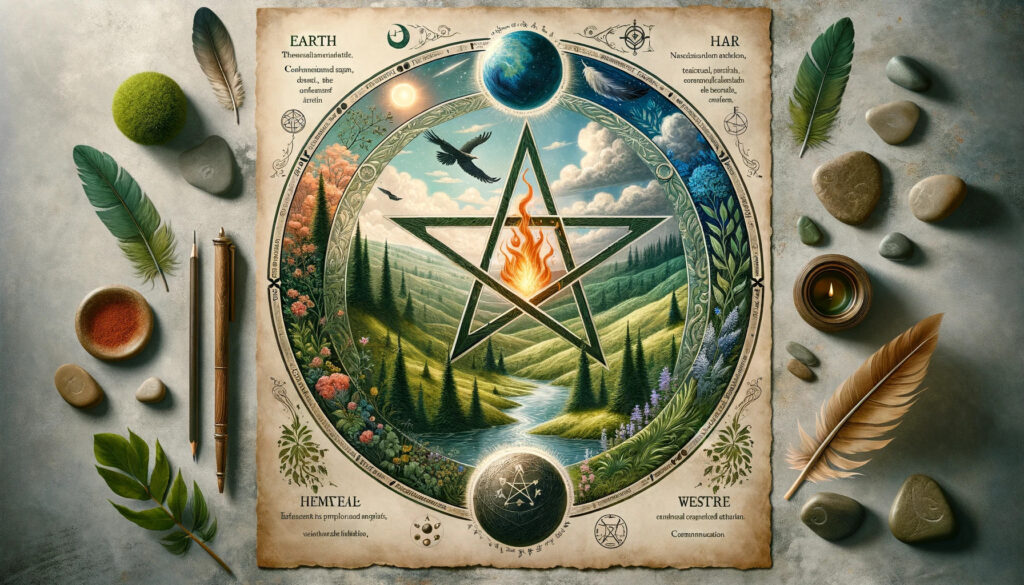
Now that we have added confusion to the subject by discussing what Wicca is not, let’s talk about what Wicca is.
Wicca is a Neopagan religious tradition. It is called Neopagan because it is a modern religion. It draws inspiration from pre-Christian religions, but it has not been continuously practiced since ancient times.
For the same reasons, the religion practiced in ancient Greece is called paganism, but modern revival worship of the ancient Greek gods is Neopagan, because it is a new religion inspired by older traditions but not continuously practiced.
The creation of Wicca was part of a broad movement in the late 19th and early 20th centuries that saw renewed interest in traditional religions. Wicca was created in the early 20th century by Gerald Gardner.
Before launching Wicca in the 1940s and 1950s, he was a keen anthropologist and student of world religions, and a member of various occult groups including the Rosicrucian Order, the New Forest Cover, the Freemasons, and the Golden Dawn.
So, he was part of a community interested in traditional religions and witchcraft.
Gardner, along with an early High Priestess of Wicca called Doreen Valiente, established a core set of beliefs, principles, and practices for Wicca. These were taught to those who joined Gardner.
However, one of the principles of Wicca is that it has no central authority figure and experimentation and finding your own path are encouraged.
As a result, different sects and denominations of Wicca quickly emerged, as did solitary practitioners, inspired by the principles of Gardnerarian Wicca and its offshoots, but not bound to any specific traditions.
Consequently, while there are certain beliefs and practices shared by many Wiccan practitioners, they are not universal.
Common Wiccan Beliefs and Practices
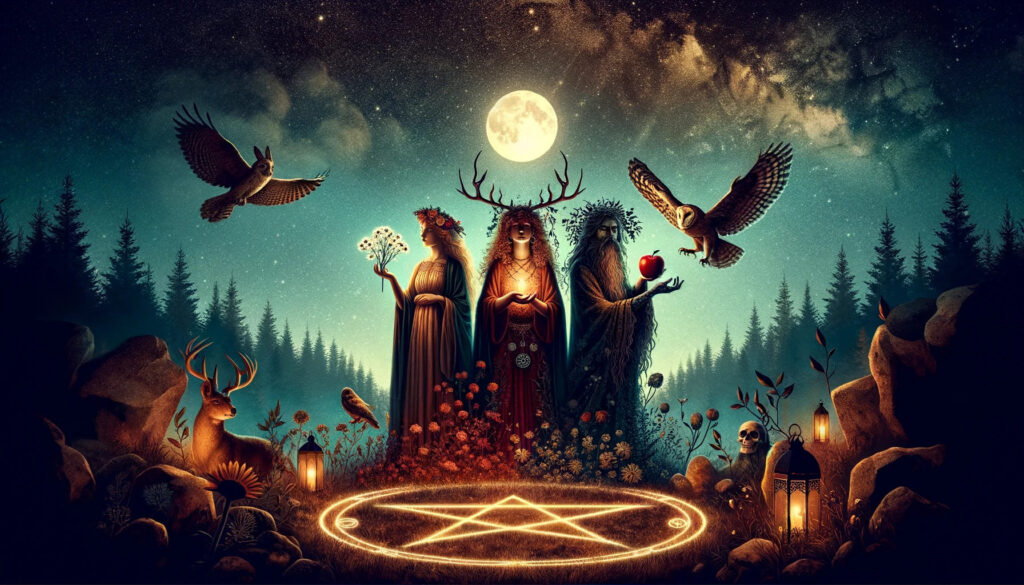
Let’s look at some of the most common elements of Wiccan beliefs and practices.
Duotheistic
Wicca is typically duotheistic, which means that practitioners principally work with a god and a goddess, usually the triple goddess and the horned god.
But these deities are engaged in a henotheistic manner, which means that all gods are considered a manifestation of these two main divine forces. In this way, Wicca encompasses deities from many religious traditions.
The god and goddess are also sometimes conceived of as primal forces without personal identities. In this way, Wicca also becomes compatible with monotheistic and atheist belief systems.
Wheel of the Year
Wicca aligns itself with the natural cycles that govern life. This is the sun cycle and the season, marked by Sabbats and usually associated with the male aspect, and monthly moon cycles, called Esbats, associated with the feminine.
Witchcraft
Many Wiccans believe that you can manipulate the world around you through certain practices, collectively known as witchcraft. This is also a common belief in other esoteric traditions.
It is believed that rituals help you focus your mind and will to engage with the forces in the world around you and create change.
Most spells focus on things such as healing, protection, and banishing negative energy.
This kind of magic, which must be pursued with good intentions, is sometimes called white magic.
Black magic is based on self-interest and is seen in a negative light among most Wiccans.
Morality
This idea of good intentions is fundamental to the morality of Wicca. One of the key principles is that if you harm none, you can do what you will.
This means that you are free to act, but you must take responsibility for the consequences of your actions.
This extends to the idea of threefold return, which suggests that what you put out into the world comes back to you threefold, positive or negative.
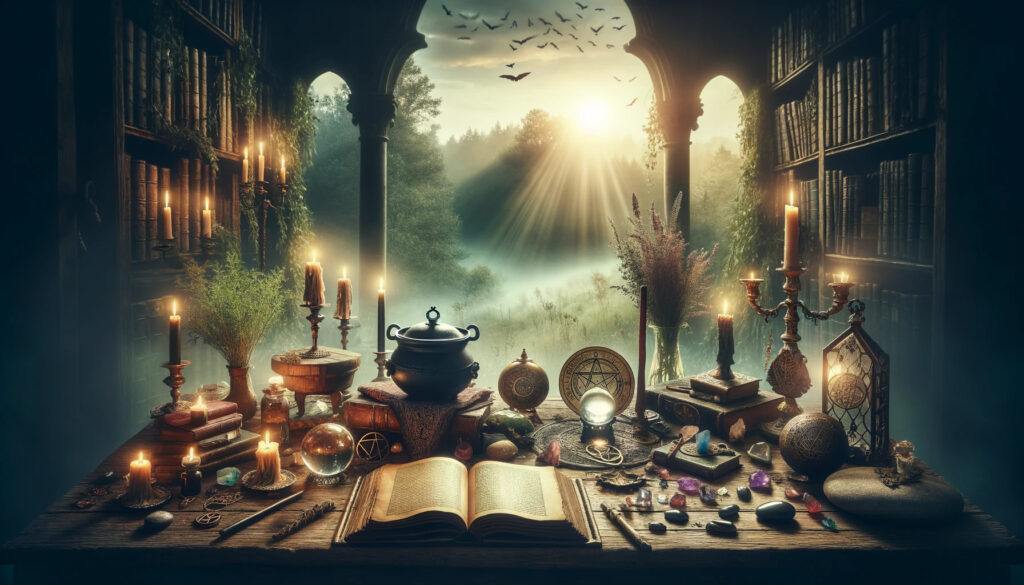
Five Elements
Wiccans believe that all things in life are made up of five elements, and it is through interacting with these fundamental elements that magic works. They are earth, air, fire, water, and spirit.
Magic Circle
The elements are used to create a sacred circle for rituals and magic.
Things symbolizing the elements are placed at the cardinal points, air in the east, fire in the south, water in the west, and earth in the north, with spirit in the center.
The five elements are also represented by the five points of the pentagram, a common symbol in Wicca.
Book of Shadows
While there is no canonical sacred text for Wicca, individual practitioners and covens record their rituals and knowledge in a Book of Shadows.
Covens
Traditionally, Wicca was practiced in covens, groups of practitioners who initiated one another as priests and priestesses.
There can be several levels of initiation in a coven.
Most do not advertise their existence or admit members under 18.
You usually need to be introduced by another cover member to join.
Solitary Practitioners
Increasingly Wicca is embraced by solitary practitioners who choose to follow the path on their own.
Their journey of learning and self-discovery is between them and a higher power, and they may choose not to tell others about their calling and practice.
Solitary practitioners choose this approach and are not simply solitary due to a lack of other witches.
Discovering Wicca
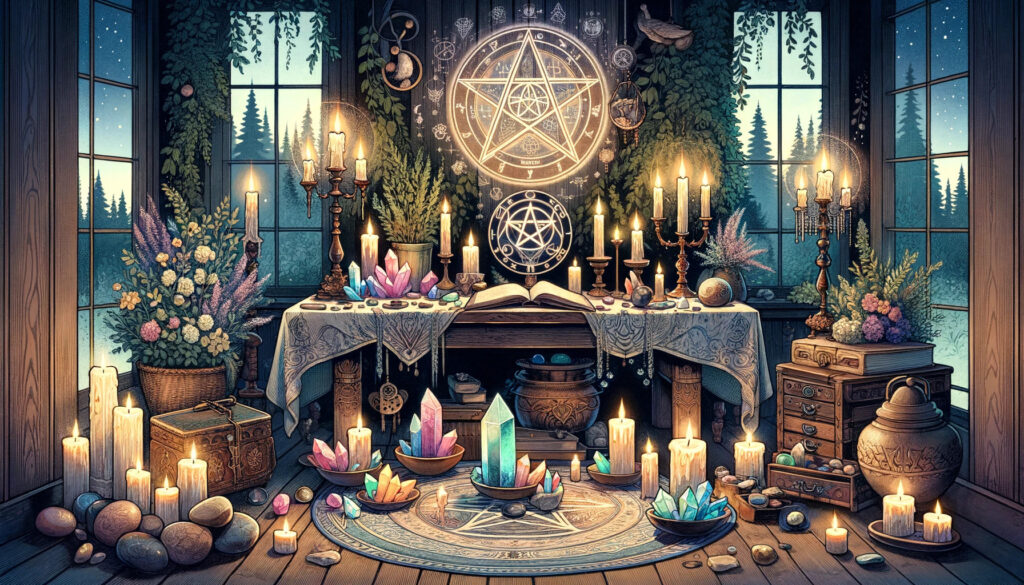
While these are some of the fundamental elements of Wicca, this is only the tip of the iceberg when it comes to its practices and beliefs.
Much ink has been spilled on the topic and you can find many publications that act as a guide for new practitioners or discuss the philosophy of Wicca.
We’ll be writing more about Wicca on the blog, inspired by our Wiccan collections.
So, if you have any questions or subjects that you would like us to address, let us know in the comments section.
Check out the introduction to witchcraft beginner’s set if you are interested.
